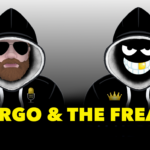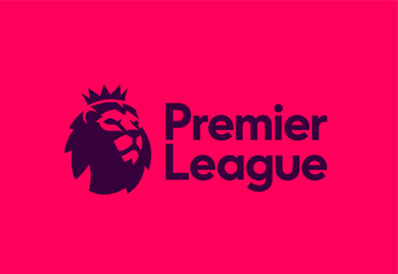It’s been a messy campaign to get there, but Australia have nonetheless found a way to the 2018 World Cup in Russia. The next question is this, how will the Socceroos get on out there?
After winning the 2015 Asian Cup on home soil, hopes were high heading into World Cup qualifying, but the Socceroos made a right hash of it, winning just five of their qualifiers, meaning they had to take the hard route via the playoffs.
A couple of old faces ensured Australian progression, with Tim Cahill proving he’s still a handful at 38 to see off Syria, before a hat-trick of set-pieces from 33-year-old Aston Villa midfielder, Mile Jedinak, guaranteed a spot at the World Cup with a starring role in the 3-1 playoff win over Honduras.
They got there in the end, but what now, especially with the Socceroos currently without a coach following Ange Postecoglou’s shock resignation?
The Coach
The first problem to deal with is who should lead Australia at the World Cup in Russia?
Despite an unconvincing qualifying campaign, Postecoglou should certainly go down as an excellent head coach of the Socceroos, going toe-to-toe with Chile, the Netherlands and Spain in an incredibly tough World Cup group in 2014, before winning the 2015 Asian Cup on home soil – all of which came simultaneously while developing the incredibly young and inexperienced squad at his disposal.
Indeed, Postecoglou has certainly met his objective of regenerating Australian football, with an exciting crop of younger players coming through the ranks, playing an exciting, progressive brand of soccer. The FFA have admitted they’re in no rush to appoint a successor to Postecoglou, with a host of names from domestic and international soccer linked to the position.
From the domestic game, Sydney head coach, Graham Arnold, Tony Popovic and newly-appointed Western Sydney Wanderers boss, Josep Gombao, have been strongly linked to the vacant position. But then there’s also a host of big names with international experience, including former Argentina and Chile coach, Marcelo Bielsa, former Socceroos (and Russia, South Korea, Turkey and Netherlands) coach Guus Hiddink, as well as former Serbia boss, Slavoljub Muslin. It’s a lengthy shortlist. Of course, Australia are unsurprisingly long shots for the World Cup, with odds of 750/1 available for those who like betting on sports for a shock Socceroo tournament win. So, should the Socceroos continue down the attacking, idealistic path set by Postecoglou? Or would they be better off following a more pragmatic approach against the world’s best?
Regardless of who gets the job though, they’ll be greeted with a squad lacking in star quality. With the biggest name in the Socceroos squad still being Tim Cahill, who is currently 38 and without a club.
Tim Cahill and The Gap Up Top
Despite still being the biggest name in the Australia squad, Cahill doesn’t have a guaranteed spot in squad – especially if any inbound manager is looking to shake things up and make a statement.
At 38, though, Cahill’s influence is unsurprisingly waning. Especially over the course of 90 minutes. But that’s not to say he can’t have a big impact – just look at the Syria game. His presence in and around the box – and especially his aerial prowess – can still cause huge problems for any defence.
As a squad player, particularly if you’re in desperate need of a late goal – Australia’s all-time leading goalscorer definitely has a part to play.
Of course, Cahill was also considered past it ahead of the 2014 World Cup, before he managed to score two goals, one of which was a stunning volley against the Netherlands – one of the highlights of the tournament. Indeed, Cahill is one of just six players to have scored at the 2006, 2010 and 2014 World Cups (Ronaldo, Rafael Márquez, Robin van Persie, Arjen Robben, Miroslav Klose and Clint Dempsey being the others), and he could join an
elite list containing just Pelé, Uwe Seeler and Klose of players to have scored at four different World Cups if he also nets in Russia.
What is more concerning for Australia though, is the lack of forward options aside from Cahill.
Tomi Juric, currently plying his trade at Swiss side, Luzern, is the other option, but with an unspectacular goalscoring record – and having struggled greatly against Honduras missing a host of big chances – it is clear that up top the Socceroos are mightily short. But all is not necessarily lost.
The Hope Behind
While the heady days of a squad boasting top European talent such as Harry Kewell, Mark Viduka and Mark Bresciano seem long gone, Australia’s attacking midfield options are very promising.
The likes of Huddersfield’s Aaron Mooy (27), Hertha Berlin’s Mathew Leckie (26) and Celtic’s Tom Rogic (24) are undoubtedly the Socceroos’ most exciting prospects heading into the tournament in Russia, with the trio all coming into their peak years. Tim Cahill will also be glad to play in front of the trio, as they are all highly creative individuals and can provide sumptuous deliveries for the likes of Cahill to get on the end of.
The big question of Mooy, Leckie and Rogic, though, is can they really mix it with the best of the best? Undoubtedly they themselves will have to be at the top of their respective games, but this will be the biggest test of their abilities to date – despite Mooy currently plying his trade in the Premier League and Leckie in Bundesliga.
And while Australia had a very much a novice look to their squad in 2014 (complemented by the likes of Cahill, Jedinak and Bresciano), the side has developed considerably since then, with Brighton goalkeeper Matt Ryan also providing some quality between the sticks and many players entering their mid/late twenties peak years, rather than the youthful exuberance on show in Brazil.
Nevertheless, there are few players plying their trade in Europe’s top leagues from the Australian contingent – which may prove slightly concerning in terms of big game experience. That said, there is no greater shop window for talented players than a World Cup, so for any Australian players looking for a shot at the big time, this is their chance to impress in front of a global audience.
Group C Opponents
After being drawn against France, Peru and Denmark in Group C, there are two ways to interpret Australia’s chances.
On the one hand, there are no easy games in that group. But on the other – France aside – Australia should know they are more than capable of giving Peru and Denmark a game and getting a result – and is nowhere near as tough as the 2014 draw that saw Australia face Spain, the Netherlands and Chile. Let’s not forget that this is Denmark’s first World Cup
since 2010 and Peru’s first since way back in 1982, after all – making them far from established performers on the global stage – something which should provide Australia at least some advantage.
The Socceroos kick-off their World Cup campaign on June 16 against European Championship finalists, France, who enter as one of the tournament favourites, boasting a hugely talented squad including the likes of Paul Pogba, Kylian Mbappé and Antoine Griezmann. Although the French finished group winners in qualifying, there were not as convincing as many had expected, losing to Sweden and dropping points to Belarus and minnows Luxembourg – a deeply embarrassing result at home for Didier Deschamps’ side.
After their huge test against France, Denmark will be the next test awaiting Australia on June 21. The Danes overcame a poor start to their qualifying group to finish as runners-up to Poland, before beating Ireland 5-1 in their play-off tie. Christian Eriksen is the star man for Denmark, who are a tough-to-beat, although very limited side who lack strength in depth. Denmark went unbeaten in 2017, conceding just five goals while earning an impressive draw against Germany in a friendly and blowing Poland apart with a stunning 4-0 win in Copenhagen.
In their last group fixture, Australia will face Peru in an international fixture for the first time on June 26. Of course, Peru beat New Zealand in the intercontinental play-offs in order to qualify, after finishing fifth in the fiercely competitive South American qualifying group – at the expense of Copa America champions, Chile. Peru also almost caused an almighty scare to Lionel Messi’s Argentina – who they drew with twice in qualifying. With most of their squad still playing in the Americas, though, Peru remain somewhat of an unknown force, although they have certainly proved hard to beat in recent years, losing just twice times in regular time in their last 18 matches.
Of course, navigating the group is just the first test of any World Cup campaign. If Australia were to finish as group runners, they would face the winners of Group D – most likely Argentina.
This is still a time of development for Australian soccer though, so matching the team of 2006 by progressing to the last 16 of the tournament would go down as a great success.







